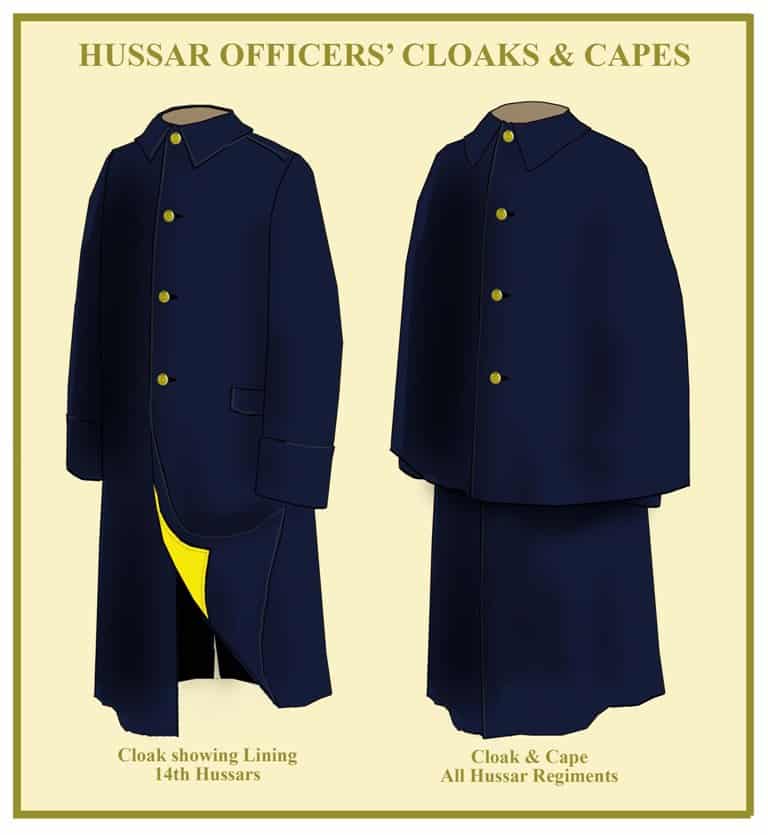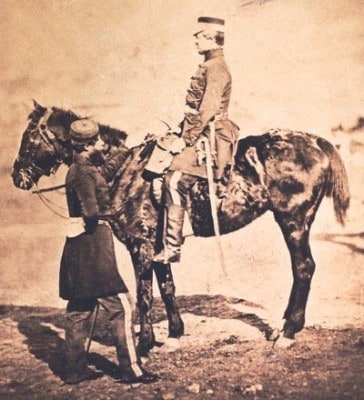FIELD SERVICE CAPS & BADGES
For hussars, the first pattern cap (also known as “Torin” or “Austrian” pattern) was also to be dark blue except for the 11th Hussars, whose cap was crimson and the 15th Hussars where it was scarlet. The edges and top were trimmed in gold Russia braid.
Early on the 13th Hussars had caps made with white bodies and it is not known whether the 3rd Hussars adopted red ones. The 19th Hussars followed the 13th with white bodies and blue crowns and the 20th and 21st did the same with crimson and French Grey respectively. It appears that the “New” hussar regiments were eager to distinguish themselves from their established colleagues.
One myth that persists is that, sometime after 1885, all hussars except the 11th and 13th were to wear scarlet caps. This actually did not happen until 1898.
As early as the 1883 regulations, a “Regimental” badge was ordered to be worn on the cap. This was less of a problem for Infantry as they already had badges designated in the dress regulations.
Cavalry regiments, however, did not have readily available cap badges and although some regiments chose at first not to wear any badge or adopted to wear the Royal Cypher, this was less than distinctive.
The cavalry were certainly not short of badges. Pouches, shoulder belts, sabretaches, shabracques and other items all bore regimental devices. F
or some regiments whose sergeants wore arm badges there appeared to be a solution. The 3rd, 8th, 10th, 11th and 14th Hussars all wore cap badges that were similar to the sergeants.
The 3rd Hussars adopted the rearing horse badge which became also their first collar badge which would later change to the “long” horse badge. The 19th Hussars had their elephant, which was certainly used as a cap badge. Some badges, however are a little more difficult to identify.
The 13th Hussars may have used the puggaree badge authorised for use by other ranks in 1890 (probably in brass) It became their collar badge in 1898, so it is likely they used it on the field cap.
Today, the cap is worn in green by the Queen’s Royal Hussars who inherited it from the Royal Irish Hussars.
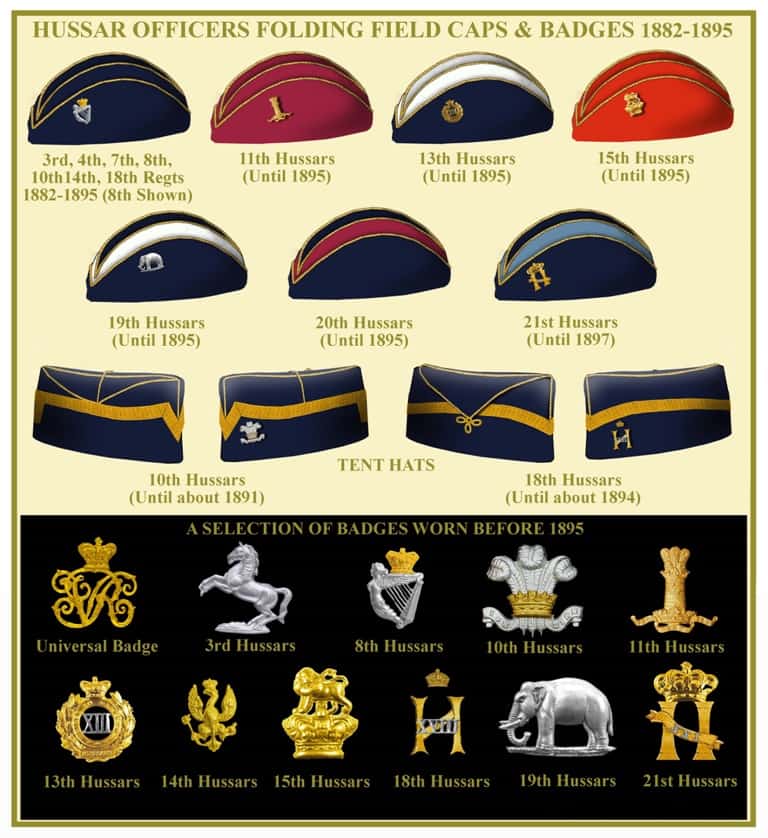
In 1896, the familiar field service cap was introduced. It still survives in the British army to this day and although it was ordered to be discontinued in 1902, it remained in use by most regiments overseas and by yeomanry regiments. It never completely disappeared and was revived for the whole army (in khaki) in 1938. Naturally, being the British army, it blossomed into all sorts of colours in the years that followed.
When first authorised, it was to be in blue with gold Russia braid edging on the flaps, crown and peak. Exceptions were the 11th with crimson, the 13th with the white body and top and the 15th in scarlet.
The 19th and 20th retained their distinctive colour themes. The 21st never appear to have adopted the cap. Photographs of the regiment in Cairo in 1897, just before their conversion to lancers, show them still wearing the Torin cap.
Some regiments had small differences such as the 11th Hussars where there was no peak and just a single button on the front. The 14th also had no peak. Since many officers wore this cap whilst mounted, it was often fitted with a black leather chinstrap
In 1898 all Hussar regiments except the 11th and 13th were ordered to wear scarlet caps.
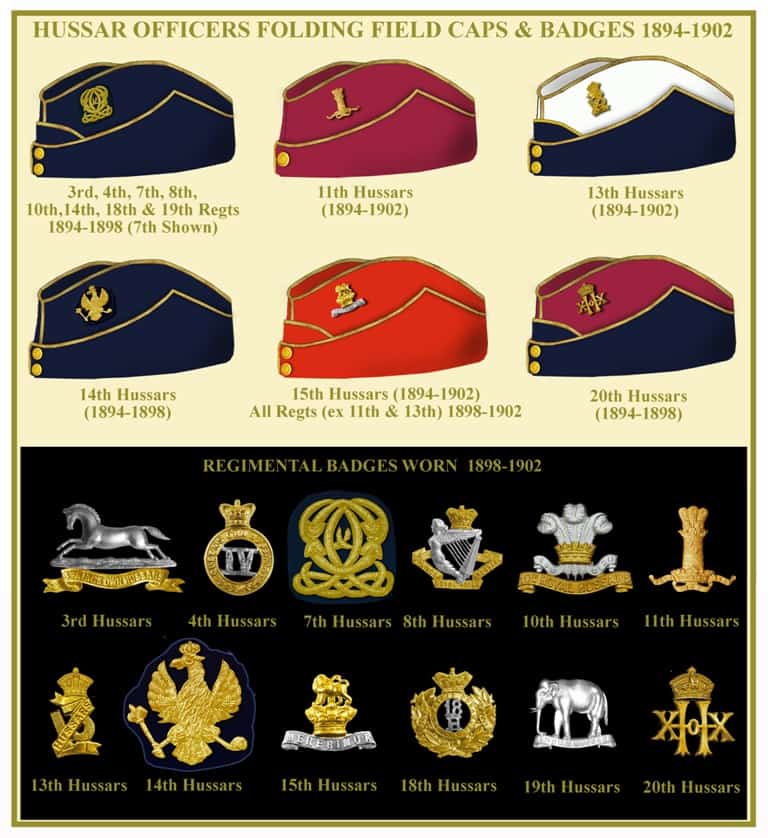
New badges, which were introduced in 1898 and illustrated in the 1900 regulations now reflected the identity of the cavalry that would carry forward to the present day.
The leaping horse of the 3rd Hussars now had a scroll with forked ends which in later versions would be tucked behind. Scrolls also appeared for the 8th, 10th and 15th Hussars. Many of the badges were similar to the collar badges.
The 7th and 14th Hussars had gold bullion badges while their later cap badges were reserved for puggarees at this time. The 13th Hussars devised a new badge with the famous “Z” scroll which would become the regiment’s badge (with changes for amalgamations) until the 1990s.
A larger version of their collar badge was still worn on the puggaree. (a hat band popular in the later used on the Australian army slouch hat.)
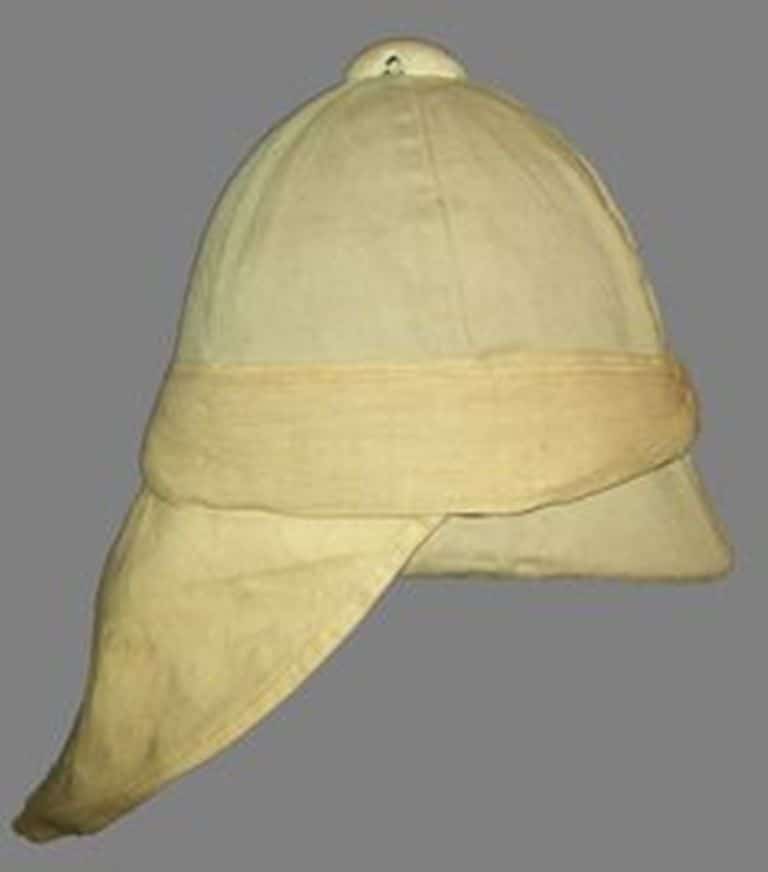
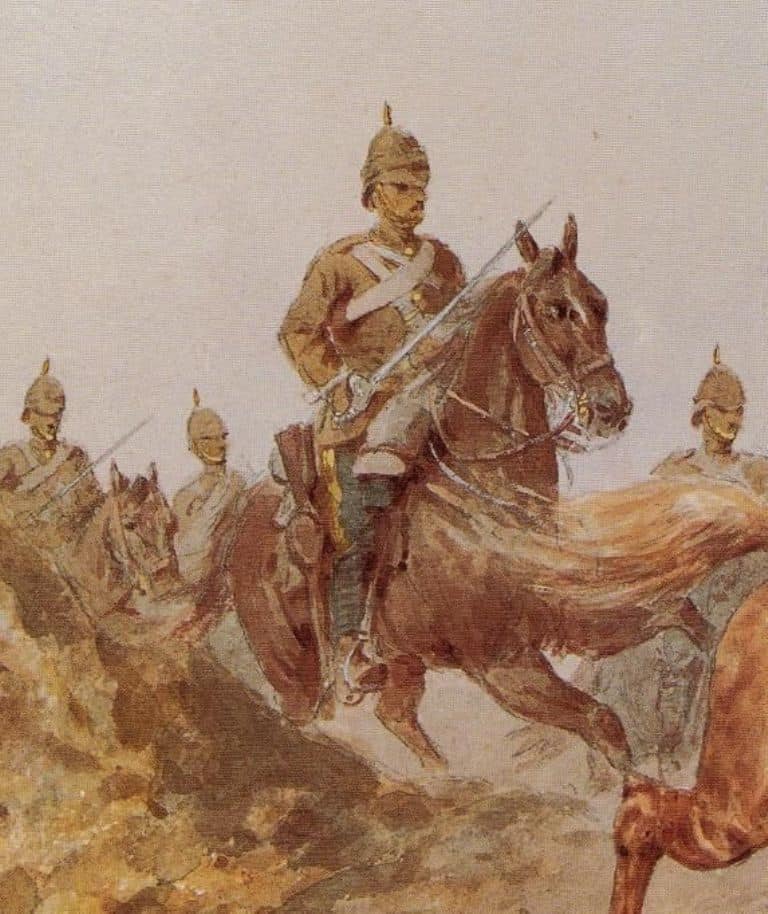
FIELD SERVICE FROCKS
Field service serge frocks in the Hussars followed the development of those in other branches. In all cases the frock was blue, at first with the pleated front and skirts and brass domed buttons.
Variations were common and the example of the 18th Hussars who wore a version with black (or horn) buttons and a distinctive brown pouch belt and pouch with ornaments the same as the dress belt (may of brass in this case). In the early 1890s, the frock became plain with patch pockets on the breast and below the waist. Shoulder chains appeared in 1896 and the shoulder straps were specially shaped to accommodate them.
The breast pockets were at first plain, but photos show a mixture of those and box pleated pockets being worn by 1898. Both the 3rd and 13th Hussars wore scarlet and white collars respectively from about 1890.
The illustration of the 3rd shows the first pattern collar badge of rearing horse.
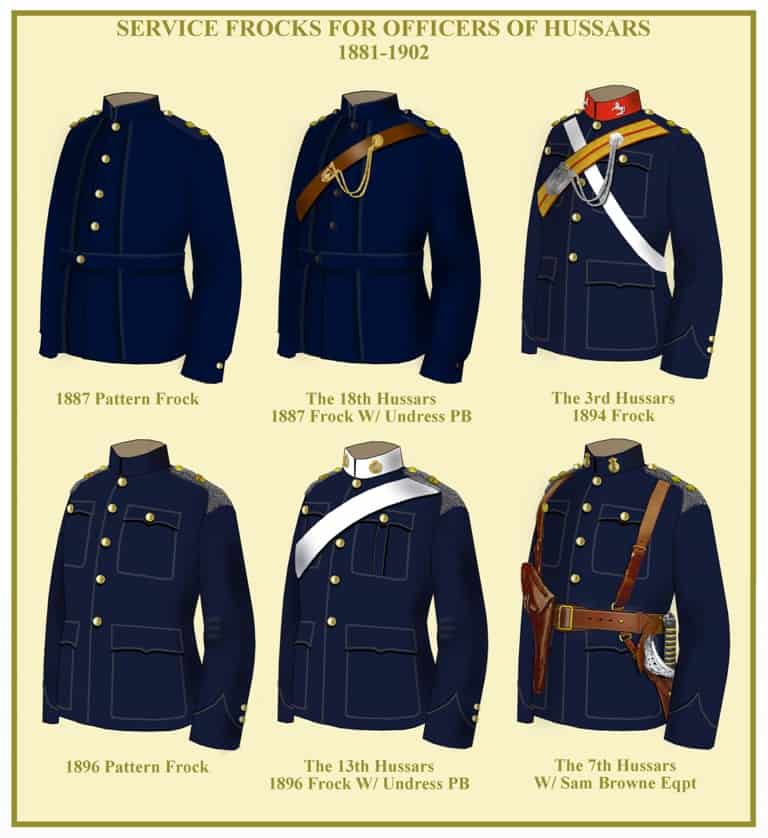
CLOAKS & CAPES
The 1883 regulations stated that the cloaks and capes of Hussar officers should be the same as for Dragoon Guards and Dragoons. The lining was to be scarlet in all regiments except the 11th which would be crimson.
The ensuing regulations in 1891 and 93 did not differ but those of 1900 stated that the Linings were to be white in the 8th and 13th Hussars, crimson in the 11th, yellow in the 14th and scarlet in the remainder.
There is no mention of a scarlet or white cape collar in the 3rd and 13th. Illustrated is the 14th Hussars cloak.
